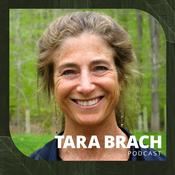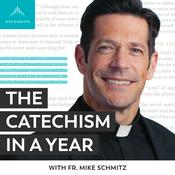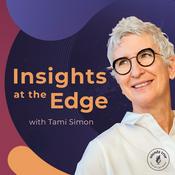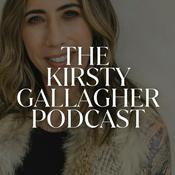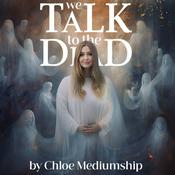Saint of the Day
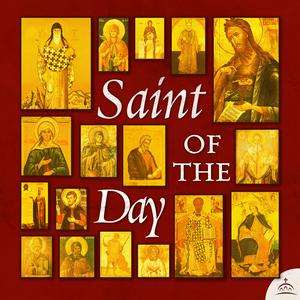
5540 episodes

The Holy Theophany of our Lord, God and Savior Jesus Christ - January 6th
06/1/2026
'About the beginning of our Lord's thirtieth year, John the Forerunner, who was some six months older than our Saviour according to the flesh, and had lived in the wilderness since his childhood, received a command from God and came into the parts of the Jordan, preaching the baptism of repentance unto the remission of sins. Then our Saviour also came from Galilee to the Jordan, and sought and received baptism though He was the Master and John was but a servant. Whereupon, there came to pass those marvellous deeds, great and beyond nature: the Heavens were opened, the Spirit descended in the form of a dove upon Him that was being baptized, and the voice was heard from the Heavens bearing witness that this was the beloved Son of God, now baptized as a man (Matt. 3:13 17; Mark 1:9 11; Luke 3:1 22). From these events the Divinity of the Lord Jesus Chist and the great mystery of the Trinity were demonstrated. It is also from this that the present feast is called "Theophany," that is, the divine manifestation, God's appearance among men. On this venerable day the sacred mystery of Christian baptism was inaugurated; henceforth also began the saving preaching of the Kingdom of Heaven.' (Great Horologion)

Holy Martyrs Theopemptus and Theonas (~290)
05/1/2026
Theopemptus was a bishop (some say in Nicomedia) who contested for Christ during the fierce persecutions of the Emperor Diocletian. For openly confessing the Faith, he was arrested and brought before the Emperor himself, whom he fearlessly convicted for his cruelty and ungodliness. The saint was then subjected to several cruel tortures, from which he miraculously emerged unhurt. He was given a deadly poison to drink, prepared by a sorcerer named Theonas. When Theonas saw that the holy bishop was unharmed by his potion, he was led to confess Christ. Finally, St Theopemptus was beheaded, and Theonas thrown in a pit and buried alive.

Venerable Apollinaria (5th c.)
04/1/2026
She was a maiden of high rank, the daughter of a magistrate named Anthimus in the city of Rome. Filled with love for Christ, she prevailed on her parents to allow her to travel on pilgrimage to the Holy Land. In Jerusalem she dismissed most of her attendants, gave her jewels, fine clothes and money to the poor, and went on to Egypt accompanied only by two trusted servants. Near Alexandria she slipped away from them and fled to a forest, where she lived in ascesis for many years. She then made her way to Sketis, the famous desert monastic colony, and presented herself as a eunuch named Dorotheos. In this guise she was accepted as a monk. Anthimus, having lost his elder daughter, was visited with another grief: his younger daughter was afflicted by a demon. He sent this daughter to Sketis, asking the holy fathers there to aid her by their prayers. They put her under the care of "Dorotheos", who after days of constant prayer effected the complete cure of her (unknowing) sister. When the girl got back home it was discovered that she was pregnant, and Anthimus angrily ordered that the monk who had cared for her be sent to him. He was astonished to find that "Dorotheos" was his own daughter Apollinaria, whom he had abandoned hope of seeing again. After some days the holy woman returned to Sketis, still keeping her identity secret from her fellow-monks. Only at her death was her true story discovered.

Holy Martyr Gordius of Caesarea (4th c.)
03/1/2026
"The Martyr Gordius, who was from Caesarea of Cappadocia, was a centurion by rank. Unable to bear the impiety of the heathen, he withdrew to the wilderness to purify himself through prayer and fasting. After he perceived that his ascetical training had prepared him sufficiently, he came down from the mountains when a certain pagan festival was held in Caesarea, attended by all, and presented himself to the multitude. Although the spectacles of the festival continued, no one paid them any heed, but all eyes were turned upon him. From his sojourn in the mountains, his look was wild, his beard was long, his raiment squalid, his body like a skeleton; yet a certain grace shone round about him. He was recognized, and a loud shout and tumult was made, as his fellow Christians rejoiced, and the enemies of the truth cried out for his death. He boldly professed his faith before the Governor, and after torments was beheaded, in the reign of Licinius in the year 314. Saint Basil the Great delivered a homily on Saint Gordius, mentioning that some of those in his audience had been present at the Saint's martyrdom." (Great Horologion)

St Seraphim of Sarov (1833)
02/1/2026
"Saint Seraphim was born in the town of Kursk in 1759. From tender childhood he was under the protection of the most holy Mother of God, who, when he was nine years old, appeared to him in a vision, and through her icon of Kursk, healed him from a grave sickness from which he had not been expected to recover. At the age of nineteen he entered the monastery of Sarov, where he amazed all with his obedience, his lofty asceticism, and his great humility. In 1780 the Saint was stricken with a sickness which he manfully endured for three years, until our Lady the Theotokos healed him, appearing to him with the Apostles Peter and John. He was tonsured a monk in 1786, being named for the holy Hieromartyr Seraphim, Bishop of Phanarion (Dec. 4), and was ordained deacon a year later. In his unquenchable love for God, he continually added labours to labours, increasing in virtue and prayer with titan strides. Once, during the Divine Liturgy of Holy and Great Thursday he was counted worthy of a vision of our Lord Jesus Christ, Who appeared encompassed by the heavenly hosts. After this dread vision, he gave himself over to greater labours. "In 1794, Saint Seraphim took up the solitary life in a cell in the forest. This period of extreme asceticism lasted some fifteen years, until 1810. It was at this time that he took upon himself one of the greatest feats of his life. Assailed with despondency and a storm of contrary thoughts raised by the enemy of our salvation, the Saint passed a thousand nights on a rock, continuing in prayer until God gave him complete victory over the enemy. On another occasion, he was assaulted by robbers, who broke his chest and his head with their blows, leaving him almost dead. Here again, he began to recover after an appearance of the most Holy Theotokos, who came to him with the Apostles Peter and John, and pointing to Saint Seraphim, uttered these awesome words, 'This is one of my kind.' "In 1810, at the age of fifty, weakened by his more than human struggles, Saint Seraphim returned to the monastery for the third part of his ascetical labours, in which he lived as a recluse, until 1825. For the first five years of his reclusion, he spoke to no one at all, and little is known of this period. After five years, he began receiving visitors little by little, giving counsel and consolation to ailing souls. In 1825, the most holy Theotokos appeared to the Saint and revealed to him that it was pleasing to God that he fully end his reclusion; from this time the number of people who came to see him grew daily. It was also at the command of the holy Virgin that he undertook the spiritual direction of the Diveyevo Convent. He healed bodily ailments, foretold things to come, brought hardened sinners to repentance, and saw clearly the secrets of the heart of those who came to him. Through his utter humility and childlike simplicity, his unrivalled ascetical travails, and his angel-like love for God, he ascended to the holiness and greatness of the ancient God-bearing Fathers and became, like Anthony for Egypt, the physician for the whole Russian land. In all, the most holy Theotokos appeared to him twelve times in his life. The last was on Annunciation, 1831, to announce to him that he would soon enter into his rest. She appeared to him accompanied by twelve virgins martyrs and monastic saints with Saint John the Baptist and Saint John the Theologian. With a body ailing and broken from innumerable hardships, and an unspotted soul shining with the light of Heaven, the Saint lived less than two years after this, falling asleep in peace on January 2, 1833, chanting Paschal hymns. On the night of his repose, the righteous Philaret of the Glinsk Hermitage beheld his soul ascending to Heaven in light. Because of the universal testimony to the singular holiness of his life, and the seas of miracles that he performed both in life and after death, his veneration quickly spread beyond the boundaries of the Russian Empire to every corner of the earth. See also July 19." (Great Horologion) July 19 is the commemoration of the uncovering of St Seraphim's holy relics, which was attended by Tsar Nicholas II. Saint Seraphim's life became a perpetual celebration of Pascha: in his later years he dressed in a white garment, greeted everyone, regardless of the season, with "Christ is Risen!" and chanted the Pascha service every day of the year
More Religion & Spirituality podcasts
Trending Religion & Spirituality podcasts
About Saint of the Day
Listen to Saint of the Day, Insight Hour with Joseph Goldstein and many other podcasts from around the world with the radio.net app

Get the free radio.net app
- Stations and podcasts to bookmark
- Stream via Wi-Fi or Bluetooth
- Supports Carplay & Android Auto
- Many other app features
Get the free radio.net app
- Stations and podcasts to bookmark
- Stream via Wi-Fi or Bluetooth
- Supports Carplay & Android Auto
- Many other app features


Saint of the Day
download the app,
start listening.

